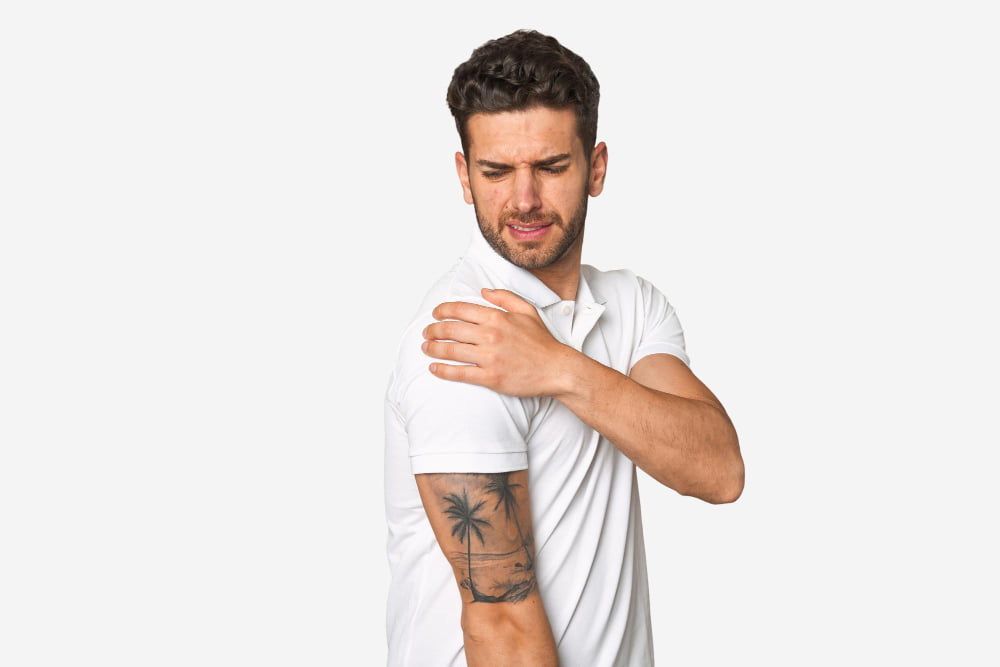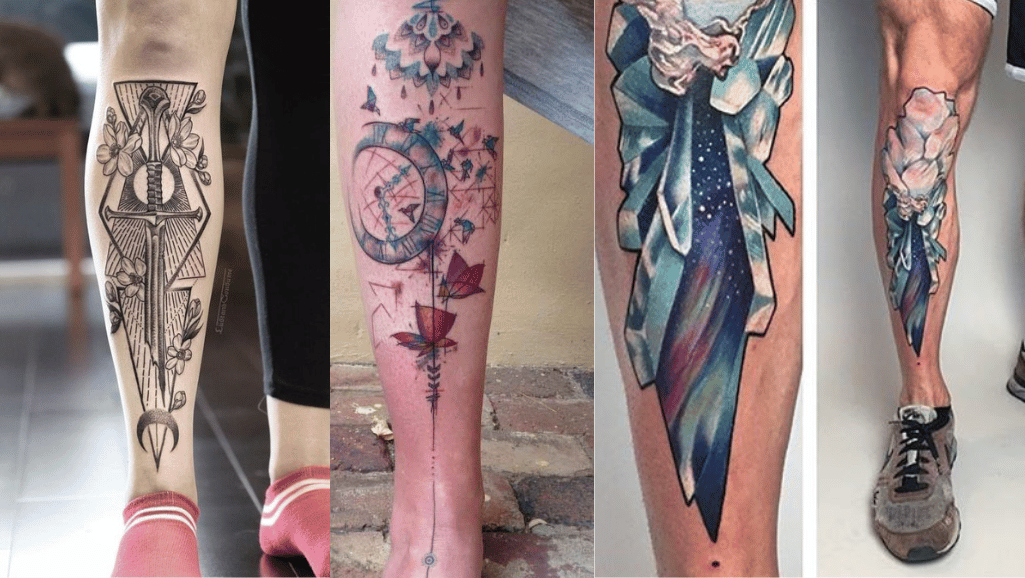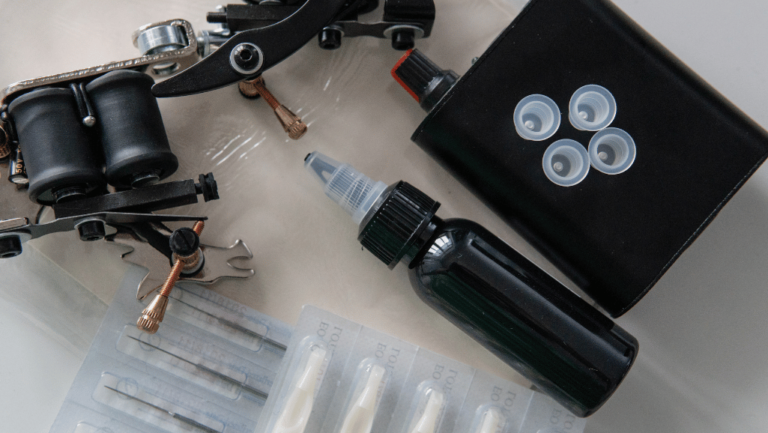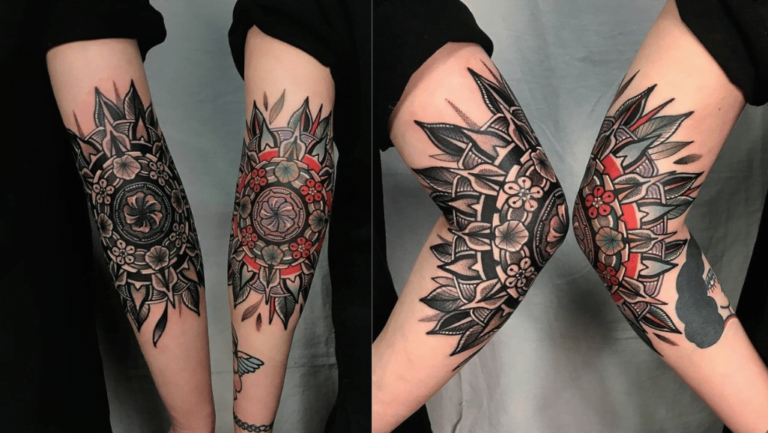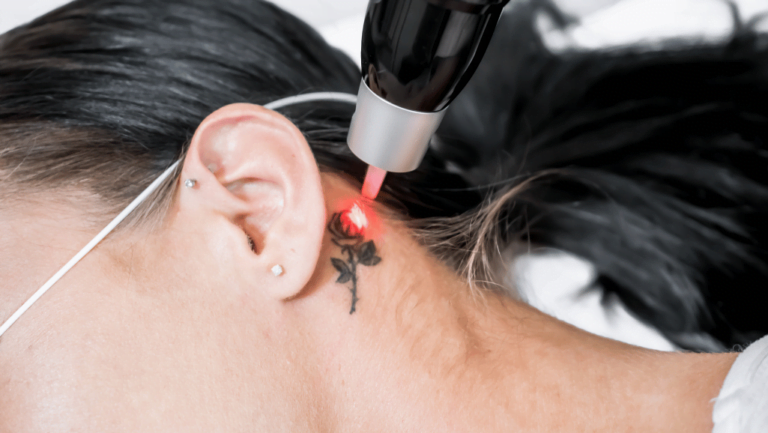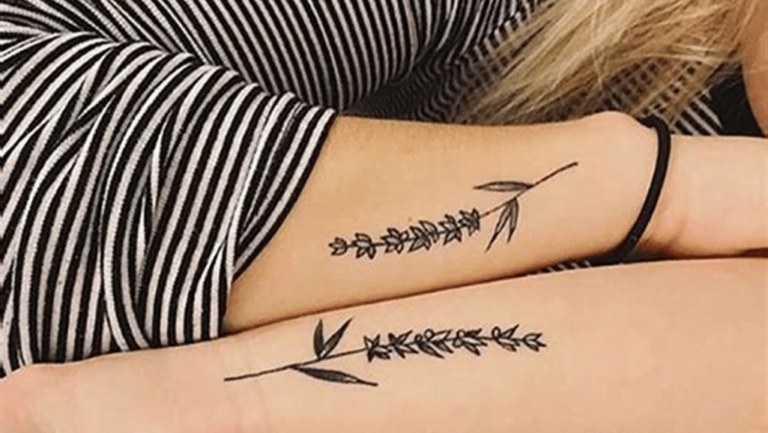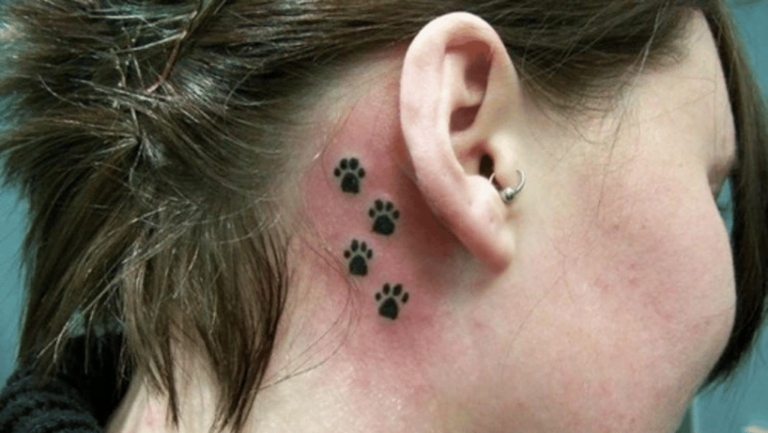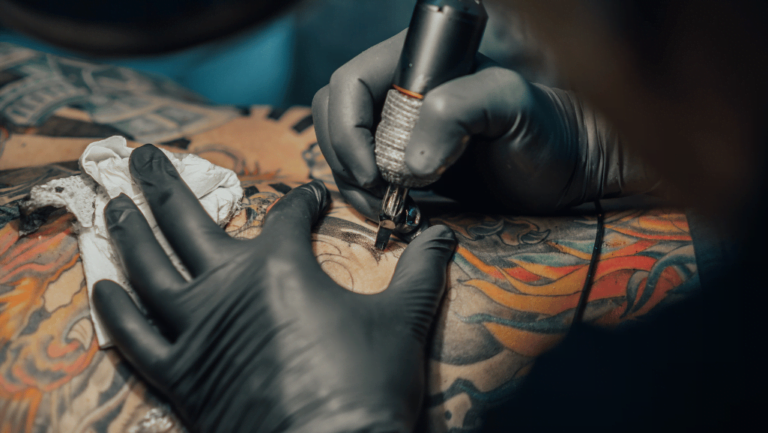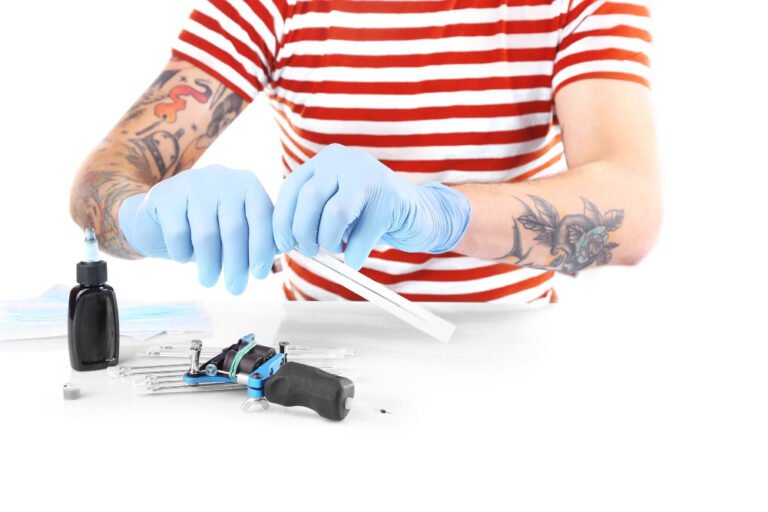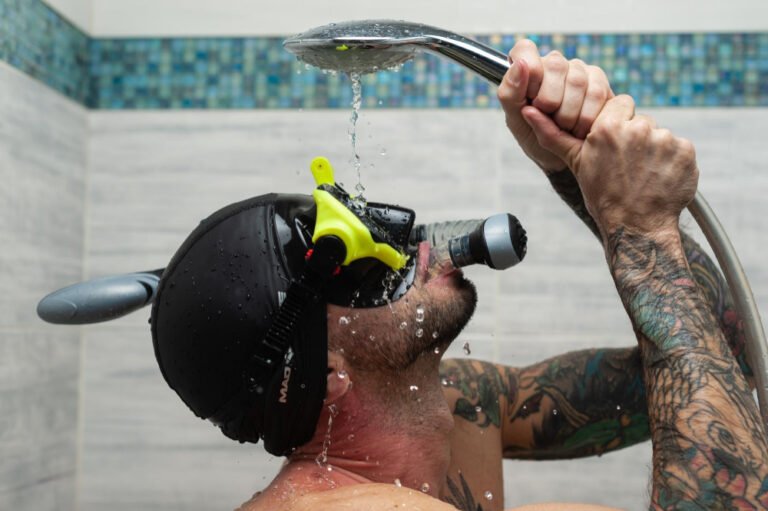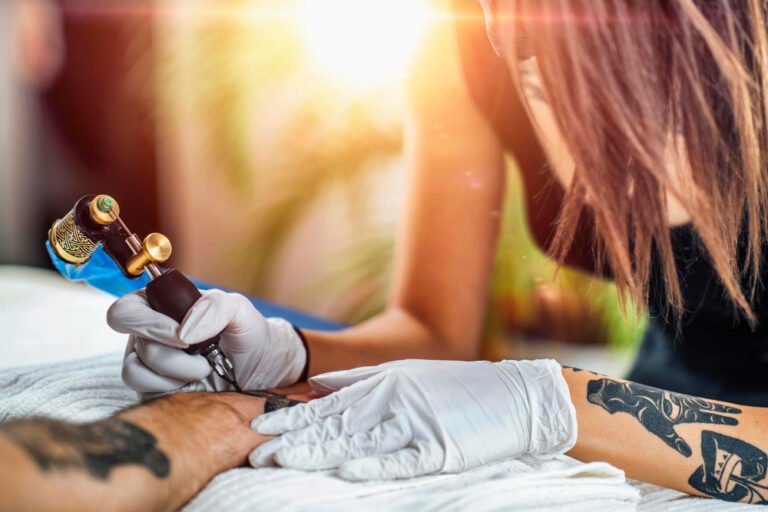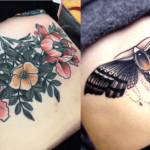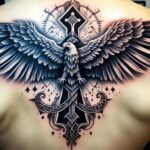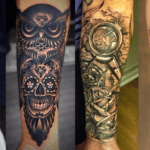Getting a tattoo is often accompanied by some level of discomfort, but the extent of pain can vary depending on various factors. When it comes to shin tattoos, the location and personal pain tolerance play a crucial role in determining the level of pain experienced. While there is no scientific evidence to conclusively measure pain intensity across different body parts, anecdotal information from the tattoo industry provides some insights. Do Shin Tattoos Hurt
Tattooing bony areas, such as the shins, ankles, and knees, can be particularly painful due to their proximity to the bone and the absence of significant fatty tissue. Moreover, areas with thinner skin and more nerve endings tend to elicit more discomfort. This implies that the pain level of a shin tattoo can be higher compared to other parts of the body with thicker skin and more fatty tissue.
Key Takeaways:
- Shin tattoos can be more painful due to their proximity to the bone and the lack of fatty tissue.
- Areas with thin skin and numerous nerve endings tend to cause more discomfort during tattooing.
- Bony areas like the shins, ankles, and knees are known to induce higher pain levels during the tattooing process.
- On the other hand, areas with thicker skin and more fat, such as the upper outer thigh and outer bicep, are generally less painful for tattoos.
- Factors like individual pain tolerance, location, and artist’s skill also influence the pain experienced during a shin tattoo.
The Most Painful Places to Get a Shin Tattoo
When it comes to getting a shin tattoo, pain intensity can vary depending on the body part being inked. Certain areas of the body have thin skin, few fat layers, and a high concentration of nerve endings, making them particularly sensitive. The shin is one such area that can be highly painful to tattoo.
Here are some of the most painful places to get a shin tattoo:
- Armpit
- Rib cage
- Ankles
- Shins
- Nipples
- Groin
- Elbows or kneecap
- Behind the knees
- Hips
- Neck
- Spine
- Head
- Face
- Ears
- Lips
- Hands
- Fingers
- Feet
- Toes
These areas have a higher concentration of nerve endings and less fat for cushioning, which contributes to the pain experienced during the tattooing process. In addition, the vibrations caused by the tattoo needle can further intensify the discomfort in these sensitive regions.
To cope with the pain and reduce its intensity while getting a shin tattoo, there are a few strategies you can try. Some people find relief by practicing deep breathing or using relaxation techniques to distract themselves from the pain. Numbing creams or sprays can also be used to help numb the area temporarily. Additionally, working with an experienced tattoo artist who can adjust the tattooing technique to minimize pain can make a significant difference.
Remember, pain tolerance varies from person to person, so what might be unbearable for one person could be manageable for another. It’s essential to communicate your pain threshold with your tattoo artist so that they can take the necessary steps to ensure your comfort throughout the tattooing process.
The Least Painful Places to Get a Shin Tattoo
When it comes to getting a shin tattoo, choosing the right location can make a significant difference in minimizing discomfort and relieving soreness. The least painful places for a shin tattoo are those that have more fat layers, fewer nerve endings, and thicker skin.
Consider these areas for a less painful tattoo experience:
- The upper outer thigh
- The outer shoulder
- The upper and lower back
- The outer bicep
- The calves
These locations provide more padding and have fewer nerve endings, which can help reduce the intensity of the pain during the tattooing process. The thicker skin in these areas also contributes to a less painful experience.
Additionally, using a shear-reduction tattoo bandage like Saniderm can provide added comfort and aid in the healing process for shin tattoos. By minimizing friction and offering a protective barrier, these bandages can help relieve discomfort and reduce soreness.
In summary, when opting for a shin tattoo, choosing a location with more fat layers, fewer nerve endings, and thicker skin can help minimize discomfort and relieve soreness. Combine this with the use of a shear-reduction tattoo bandage like Saniderm for optimal comfort and healing results.
Factors that Affect Tattoo Pain
Several factors can influence the level of pain experienced during a shin tattoo. Understanding these factors can help individuals manage and minimize discomfort throughout the tattooing process.
Biological Sex
Research suggests that biological sex can play a role in how intensely someone perceives pain. Females may experience more pain during a shin tattoo compared to males. However, it’s important to note that pain thresholds can vary greatly among individuals, and this factor alone may not predict pain levels accurately.
Experience with Tattoos
Pain tolerance can be affected by previous tattoo experience. Individuals who have been tattooed before may develop a higher pain threshold over time. This increased tolerance to pain can make future tattoos, including shin tattoos, more manageable.
Age and Weight
Age and weight can also influence pain perception during a shin tattoo. Older individuals and those with lower body fat may experience more pain due to thinner skin and less padding. Conversely, younger individuals and those with higher body fat may have a greater cushioning effect, potentially reducing discomfort.
Tattoo Artist’s Skill
The skill level of the tattoo artist can significantly impact pain management during a shin tattoo. Experienced artists understand how to work in painful areas, such as the shins, and may take additional measures to minimize discomfort for their clients. Choosing a skilled artist with a reputation for sensitivity can make a significant difference in managing shin tattoo pain.
By considering these factors and discussing them with a professional tattoo artist, individuals can better prepare themselves for the potential pain associated with getting a shin tattoo. Open communication and a clear understanding of personal pain tolerance can help achieve a more comfortable and satisfying tattoo experience.
Conclusion
After considering various factors, it is clear that the pain level experienced during a shin tattoo can vary significantly. Highly sensitive areas with thin skin, few fat layers, and numerous nerve endings, such as the ankles, shins, and knees, tend to be the most painful for tattooing. On the contrary, areas with more padding and fewer nerve endings, like the upper outer thigh and outer bicep, tend to be less painful.
Additionally, individual factors such as pain tolerance, experience with tattoos, age, weight, and the artist’s skill can also affect the pain level. It is important to consult with a professional tattoo artist and consider your own pain tolerance when deciding on a shin tattoo. Understanding the potential pain involved and discussing it with your artist can help you better manage the process and enhance your overall tattooing experience.
In summary, getting a shin tattoo can be accompanied by some level of discomfort, but it is manageable with appropriate preparations and communication with your tattoo artist. By considering factors like the location of the tattoo, your individual pain tolerance, and the artist’s skill, you can make an informed decision and achieve the desired result while minimizing any potential pain.
Ultimately, the decision to get a shin tattoo is a personal one, and it’s essential to prioritize your own comfort and well-being. By conducting research, understanding the pain factors involved, and exploring pain management techniques, you can ensure a positive tattooing experience that aligns with your preferences and expectations.
FAQ
Do shin tattoos hurt?
What is the pain level of a shin tattoo?
How can I manage pain during a shin tattoo?
Are there any pain relief options for shin tattoos?
How can I minimize discomfort during a shin tattoo?
How can I reduce the pain intensity of a shin tattoo?
What factors affect the pain level of a shin tattoo?
How should I choose a tattoo artist for a shin tattoo?
Forhad
Forhad's writing is not just about the artistry of tattoos or the latest trends in the industry; it's an exploration of the deep-rooted connections people have with their tattoos, reflecting personal narratives, cultural histories, and moments of transformation. Through a mix of in-depth features, personal narratives, and insightful analyses, he sheds light on the multifaceted nature of tattooing, revealing the emotional and cultural layers that lie beneath the surface.



